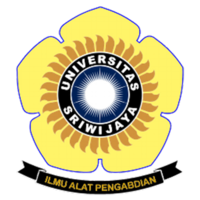Penentuan Kawasan Hortikultura Menggunakan Pendekatan Komoditas Unggulan di Sumatera Selatan
Abstract
Ariadi Z, Nurwahyudi MA, Efriandi E, Defriyanti WT. 2022. The determination of horticultural clusters using superior commodity approach in South Sumatra. In: Herlinda S et al. (Eds.), Prosiding Seminar Nasional Lahan Suboptimal ke-10 Tahun 2022, Palembang 27 Oktober 2022. pp. 954-962. Palembang: Penerbit & Percetakan Universitas Sriwijaya (UNSRI).
The implementation of horticultural development by regional governments in South Sumatra still has various obstacles, such as a large number of production centers with the same commodity, production adequacy, and budget constraints. Therefore, it is important to focus on the development of horticultural clusters. This study aimed to determine the horticultural clusters using the superior commodity approach in South Sumatra. We use horticultural production data series as data sources. We also use Location Quotient (LQ), Shift Share analysis, and Klassen Typology as analysis methods. The results showed that each horticultural commodity tested had a comparative advantage and was spread over the districts/cities. The same conditions also occurred for competitive advantage. Another result showed that only 8 (eight) commodities simultaneously had comparative and competitive advantages in a district/city. Thus, it was determined that the district/city area where the two advantages are located is designated as a horticultural cluster. These clusters were the shallot clusters in Ogan Komering Ulu and Pagar Alam, the chili cluster in Ogan Komering Ilir, the potato cluster in Pagaralam, the duku clusters in Musi Rawas Utara, the durian cluster in Musi Rawas, Ogan Komering Ulu Selatan, and Musi Rawas Utara, the citrus clusters in Ogan Komering Ulu, Musi Rawas Utara, and Pagar Alam. mango cluster in Musi Rawas Utara and banana cluster in Muara Enim.
Keywords
Full Text:
PDFArticle Metrics
Abstract view : 226 timesPDF - 588 times
Refbacks
- There are currently no refbacks.

